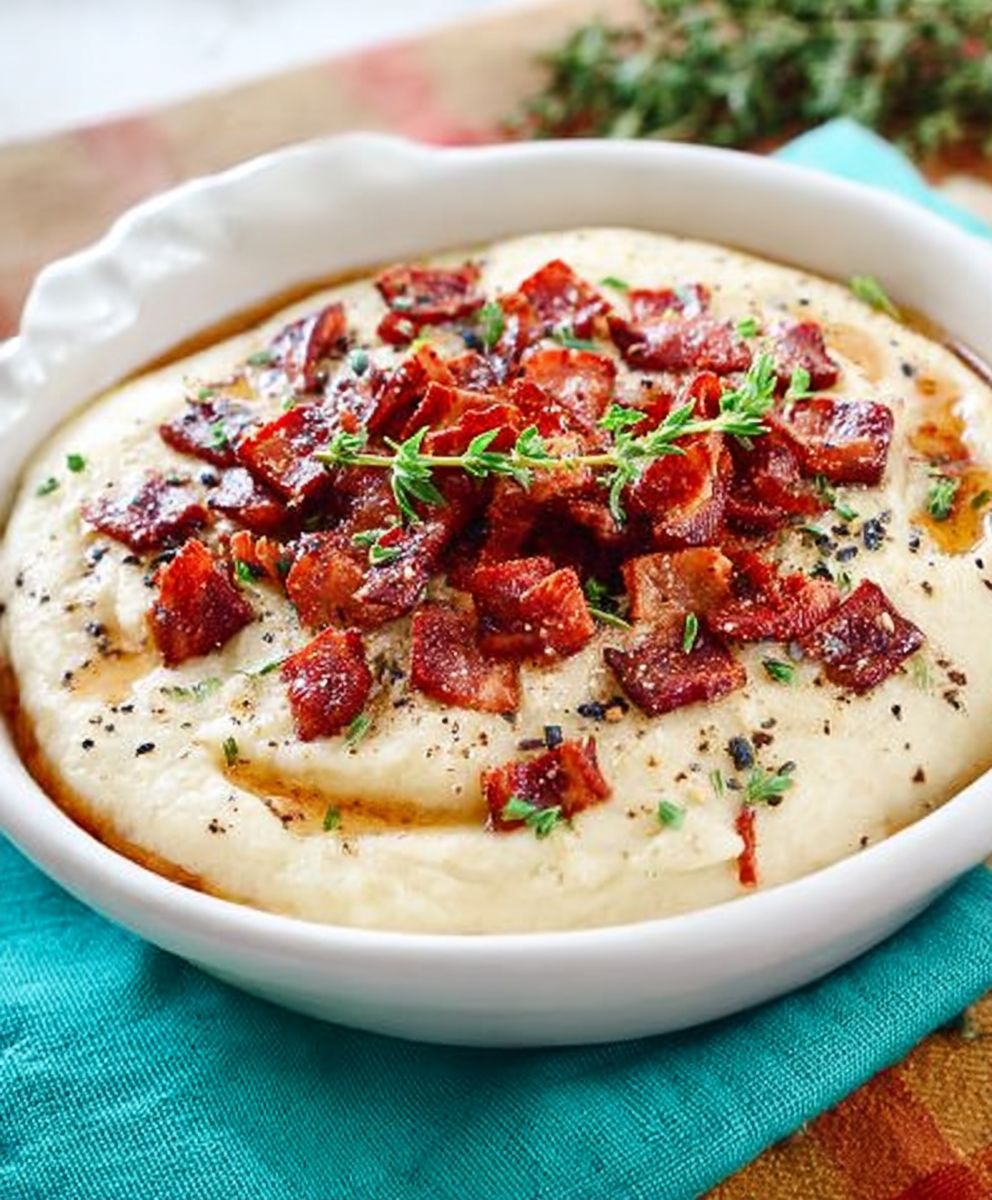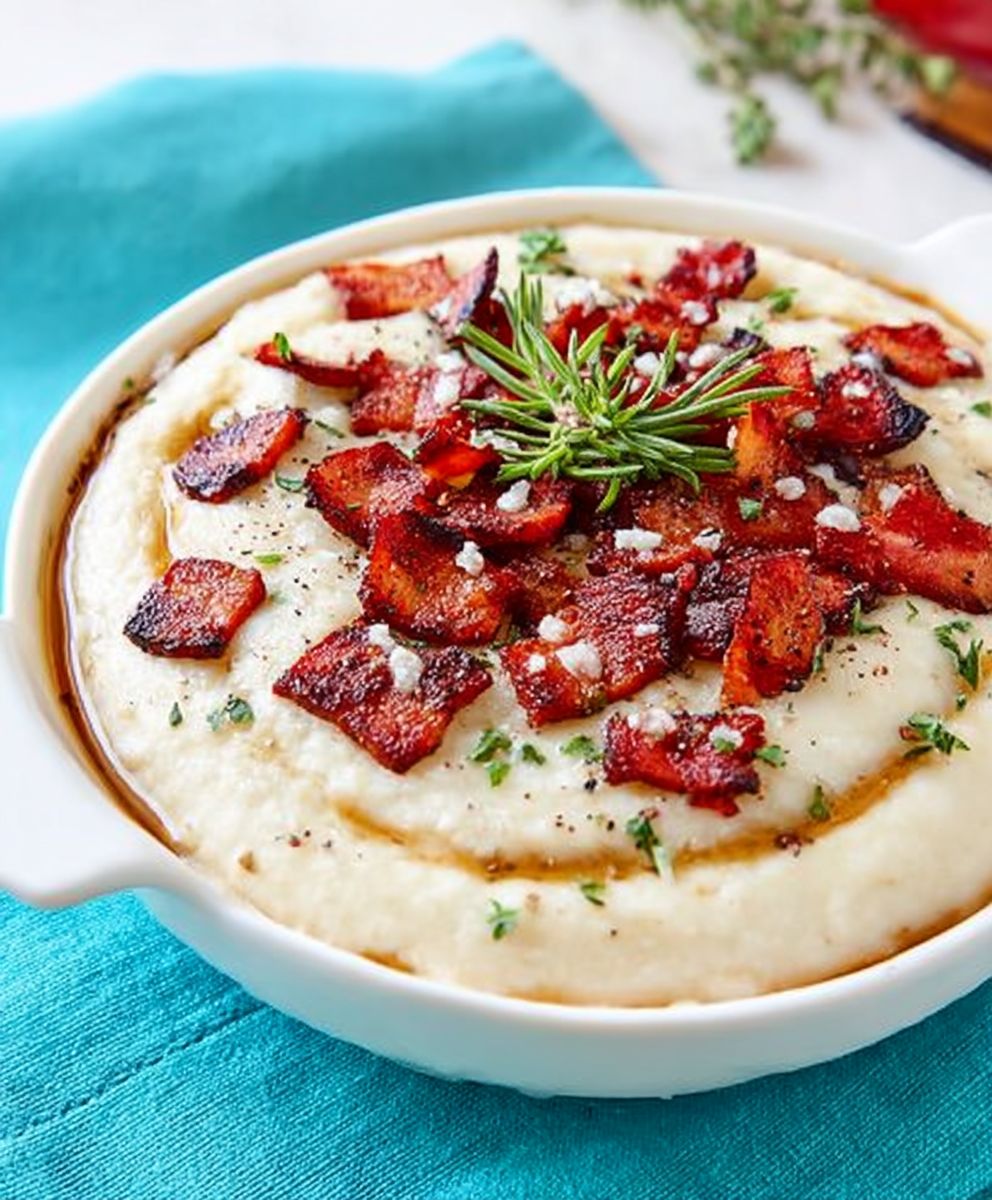Parmesan Parsnip Puree: Prepare to elevate your side dish game with this luxuriously smooth and flavorful creation! Forget everything you thought you knew about parsnips; this recipe transforms the humble root vegetable into a sophisticated and utterly irresistible accompaniment to any meal. Have you ever wondered how to make a simple vegetable taste like a gourmet experience? This is your answer.
While parsnips might not be the first vegetable that springs to mind when planning a dinner party, they have a rich history, dating back to ancient Roman times. They were a staple food long before potatoes gained popularity. In this modern twist, we’re celebrating the parsnip’s subtle sweetness and earthy notes by pairing it with the salty, umami-rich goodness of Parmesan cheese. The result? A harmonious blend of flavors that will tantalize your taste buds.
People adore this Parmesan Parsnip Puree for its creamy texture, its ease of preparation, and its ability to complement a wide range of main courses. It’s a delightful alternative to mashed potatoes, offering a unique flavor profile that’s both comforting and refined. Plus, it’s incredibly versatile! Serve it alongside roasted chicken, grilled steak, or even as a base for vegetarian dishes. The subtle sweetness of the parsnips, combined with the savory Parmesan, creates a truly unforgettable culinary experience. I promise, once you try this, it will become a regular on your dinner table!
Ingredients:
- 1.5 lbs parsnips, peeled and chopped into 1-inch pieces
- 4 cloves garlic, minced
- 4 tablespoons unsalted butter
- 1/2 cup heavy cream
- 1/4 cup grated Parmesan cheese, plus more for garnish
- 2 tablespoons olive oil
- 1 teaspoon salt, or to taste
- 1/2 teaspoon black pepper, or to taste
- 1/4 teaspoon nutmeg (optional)
- 2 cups vegetable broth or chicken broth
- Fresh parsley, chopped (for garnish)
Roasting the Parsnips and Garlic
Okay, let’s get started! The first step is to roast our parsnips and garlic. Roasting brings out their natural sweetness and gives them a lovely caramelized flavor that’s just perfect for this puree.
- Preheat your oven to 400°F (200°C). Make sure your oven is fully preheated before you put anything in. This ensures even cooking and optimal caramelization.
- Prepare the parsnips and garlic. In a large bowl, toss the chopped parsnips and minced garlic with the olive oil, salt, and pepper. Make sure everything is evenly coated. This helps the parsnips roast properly and prevents them from drying out.
- Arrange on a baking sheet. Spread the parsnips and garlic in a single layer on a baking sheet. Avoid overcrowding the pan, as this will steam the parsnips instead of roasting them. If necessary, use two baking sheets.
- Roast in the oven. Roast for 25-30 minutes, or until the parsnips are tender and slightly browned. I like to flip them halfway through to ensure even browning on all sides. Keep an eye on the garlic; if it starts to brown too quickly, you can remove it from the pan or cover it loosely with foil.
- Check for doneness. To check if the parsnips are done, pierce them with a fork. They should be easily pierced and feel soft. If they’re still firm, continue roasting for a few more minutes.
Pureeing the Parsnips
Now that our parsnips are beautifully roasted, it’s time to transform them into a silky smooth puree. This is where the magic happens!
- Transfer to a saucepan. Carefully transfer the roasted parsnips and garlic to a medium saucepan. Be sure to scrape up any browned bits from the baking sheet those are packed with flavor!
- Add broth. Pour in the vegetable broth (or chicken broth, if you prefer). The broth will help to loosen the parsnips and create a smooth consistency.
- Simmer. Bring the mixture to a simmer over medium heat. Reduce the heat to low, cover, and let simmer for 10-15 minutes, or until the parsnips are very tender. This step ensures that the parsnips are soft enough to puree easily.
- Puree the mixture. There are a few ways you can puree the parsnips:
- Immersion blender: If you have an immersion blender, you can puree the mixture directly in the saucepan. This is the easiest and quickest method.
- Regular blender: If you’re using a regular blender, carefully transfer the hot parsnip mixture to the blender in batches. Be sure to vent the blender lid to prevent pressure from building up.
- Food processor: A food processor can also be used, but it may not result in as smooth of a puree as a blender.
Puree until completely smooth, adding more broth if needed to reach your desired consistency. I like my puree to be thick and creamy, but you can adjust the consistency to your liking.
- Strain (optional). For an extra-smooth puree, you can strain the mixture through a fine-mesh sieve. This will remove any remaining lumps or fibers.
Finishing Touches
We’re almost there! Now it’s time to add the final touches that will elevate this parsnip puree to the next level.
- Add butter and cream. Return the pureed parsnips to the saucepan. Stir in the butter and heavy cream. The butter adds richness and the cream adds a luxurious smoothness.
- Incorporate Parmesan cheese. Stir in the grated Parmesan cheese. The Parmesan adds a salty, savory flavor that complements the sweetness of the parsnips perfectly.
- Season to taste. Taste the puree and adjust the seasoning as needed. You may want to add more salt, pepper, or a pinch of nutmeg for warmth.
- Heat through. Heat the puree gently over low heat until warmed through. Be careful not to boil it, as this can cause the cream to curdle.
Serving Suggestions
Your Parmesan Parsnip Puree is now ready to be served! Here are a few ideas on how to enjoy it:
- As a side dish: This puree is a fantastic side dish for roasted meats, poultry, or fish. It pairs especially well with pork tenderloin, roasted chicken, or pan-seared salmon.
- As a base for other dishes: Use the puree as a base for other dishes, such as shepherd’s pie or gratins. It adds a creamy, flavorful element that elevates the dish.
- As a vegetarian main course: Serve the puree as a vegetarian main course, topped with roasted vegetables, toasted nuts, or a fried egg.
- As a holiday dish: This puree is a delicious and elegant addition to any holiday meal. It’s a great alternative to mashed potatoes or sweet potato casserole.
Garnishing and Presentation
Presentation is key! A few simple garnishes can make your Parmesan Parsnip Puree look even more appealing.
- Parmesan cheese: Sprinkle a little extra grated Parmesan cheese over the top of the puree.
- Fresh parsley: Garnish with chopped fresh parsley for a pop of color and freshness.
- Drizzle of olive oil: Drizzle a small amount of olive oil over the top for added richness and flavor.
- Toasted nuts: Sprinkle with toasted nuts, such as walnuts or pecans, for added texture and crunch.
- Crispy sage leaves: Fry a few sage leaves in butter until crispy and use them as a garnish.
Tips and Tricks
Here are a few extra tips and tricks to help you make the perfect Parmesan Parsnip Puree:
- Choose fresh parsnips. Look for parsnips that are firm, smooth, and free of blemishes. Avoid parsnips that are soft or shriveled.
- Peel the parsnips thoroughly. The skin of parsnips can be tough and bitter, so be sure to peel them thoroughly before roasting.
- Don’t overcrowd the baking sheet. Overcrowding the baking sheet will steam the parsnips instead of roasting them. If necessary, use two baking sheets.
- Adjust the consistency to your liking. Add more broth to thin the puree or cook it down to thicken it.
- Use high-quality Parmesan cheese. The flavor of the Parmesan cheese will have a big impact on the final result, so use a good-quality cheese.
- Don’t overcook the puree. Overcooking the puree can make it gummy or gluey.
- Make it ahead of time. You can make the puree ahead of time and reheat it when you’re ready to serve. Store it in an airtight container in the refrigerator for up to 3 days.
- Freeze it for later. Parmesan Parsnip Puree freezes well. Let it cool completely, then transfer it to a freezer-safe container and freeze for up to 2 months. Thaw it overnight in the refrigerator before reheating.
Variations
Want to mix things up a bit? Here are a few variations you can try:
- Add other vegetables: Try adding other roasted vegetables to the puree, such as carrots, sweet potatoes, or butternut squash.
- Use different herbs: Experiment with different herbs, such as thyme, rosemary, or sage.
- Add a touch of sweetness: Add a drizzle of maple syrup or honey for a touch of sweetness.
- Make it vegan: Use plant-based butter and cream alternatives to make this puree vegan. You can also substitute nutritional yeast for the Parmesan cheese.
- Spice it up: Add a pinch of red pepper flakes for a little heat.
Troubleshooting
Sometimes things don’t go exactly as planned. Here are a few common problems and how to fix them:
- Pure

Conclusion:
This Parmesan Parsnip Puree is truly a revelation, transforming humble parsnips into a sophisticated and utterly delicious side dish. I urge you to give it a try; you won’t be disappointed! The subtle sweetness of the parsnips, perfectly balanced by the salty, nutty Parmesan and a hint of garlic, creates a flavor profile that’s both comforting and elegant. It’s a dish that’s simple enough for a weeknight meal but impressive enough to grace your holiday table.
Why is this a must-try? Because it’s incredibly versatile, surprisingly easy to make, and delivers a flavor punch that will have everyone asking for seconds. Forget boring mashed potatoes; this puree is a game-changer. It’s a fantastic way to introduce parsnips to even the pickiest eaters, and it’s a delightful alternative to heavier, cream-laden side dishes. Plus, it’s naturally gluten-free!
Beyond its inherent deliciousness, the beauty of this recipe lies in its adaptability. Looking for serving suggestions? This puree is divine alongside roasted chicken, pan-seared salmon, or grilled pork tenderloin. It also makes a wonderful base for vegetarian dishes, such as roasted root vegetables or lentil stew. For a truly decadent experience, try topping it with a drizzle of truffle oil or a sprinkle of toasted pine nuts.
Want to explore some variations? If you’re a fan of spice, add a pinch of red pepper flakes for a subtle kick. For a richer flavor, substitute half of the Parmesan with Pecorino Romano. And if you’re feeling adventurous, try roasting the parsnips with a sprig of rosemary or thyme for an extra layer of herbaceousness. You could even swirl in a spoonful of brown butter just before serving for an unbelievably rich and nutty flavor. Another great variation is to add a touch of nutmeg or ginger for a warm, comforting spice. Consider adding a splash of cream or milk for an even smoother and creamier texture. Experiment with different herbs like sage or chives to complement the Parmesan and parsnip flavors.
I’m confident that this Parmesan Parsnip Puree will become a staple in your kitchen. It’s a dish that’s both satisfying and sophisticated, and it’s sure to impress your family and friends.
So, what are you waiting for? Gather your ingredients, preheat your oven, and get ready to experience the magic of this incredible puree. I’m so excited for you to try it!
Once you’ve made it, I’d absolutely love to hear about your experience. Did you make any variations? What did you serve it with? What did your family think? Share your photos and stories in the comments below! Your feedback is invaluable, and it helps me to continue creating recipes that you’ll love. Happy cooking! I can’t wait to see your culinary creations! Don’t forget to rate the recipe if you enjoyed it! Your ratings help others discover this delicious dish. Enjoy!
Parmesan Parsnip Puree: A Delicious & Easy Recipe
Silky smooth and flavorful Parmesan Parsnip Puree, perfect as a side dish or base for other recipes. Roasting the parsnips brings out their natural sweetness, enhanced with garlic, Parmesan, and a touch of cream.
Ingredients
- 1.5 lbs parsnips, peeled and chopped into 1-inch pieces
- 4 cloves garlic, minced
- 4 tablespoons unsalted butter
- 1/2 cup heavy cream
- 1/4 cup grated Parmesan cheese, plus more for garnish
- 2 tablespoons olive oil
- 1 teaspoon salt, or to taste
- 1/2 teaspoon black pepper, or to taste
- 1/4 teaspoon nutmeg (optional)
- 2 cups vegetable broth or chicken broth
- Fresh parsley, chopped (for garnish)
Instructions
- Preheat oven to 400°F (200°C).
- Prepare parsnips and garlic: In a large bowl, toss parsnips and garlic with olive oil, salt, and pepper until evenly coated.
- Arrange on baking sheet: Spread parsnips and garlic in a single layer on a baking sheet. Avoid overcrowding.
- Roast: Roast for 25-30 minutes, or until parsnips are tender and slightly browned, flipping halfway through. Watch garlic to prevent burning.
- Check for doneness: Parsnips should be easily pierced with a fork.
- Transfer to saucepan: Transfer roasted parsnips and garlic to a medium saucepan, scraping up any browned bits.
- Add broth: Pour in vegetable or chicken broth.
- Simmer: Bring to a simmer over medium heat, then reduce heat to low, cover, and simmer for 10-15 minutes, or until parsnips are very tender.
- Puree: Use an immersion blender, regular blender (venting the lid!), or food processor to puree until completely smooth. Add more broth if needed to reach desired consistency.
- Strain (optional): For an extra-smooth puree, strain through a fine-mesh sieve.
- Add butter and cream: Return pureed parsnips to the saucepan. Stir in butter and heavy cream.
- Incorporate Parmesan cheese: Stir in grated Parmesan cheese.
- Season to taste: Taste and adjust seasoning with salt, pepper, and nutmeg (if using).
- Heat through: Heat gently over low heat until warmed through. Do not boil.
- Serve: Garnish with extra Parmesan cheese, fresh parsley, a drizzle of olive oil, toasted nuts, or crispy sage leaves.
Notes
- Choose fresh, firm parsnips.
- Peel parsnips thoroughly to remove any bitterness.
- Don’t overcrowd the baking sheet for optimal roasting.
- Adjust the consistency of the puree by adding more broth.
- Use high-quality Parmesan cheese for the best flavor.
- Don’t overcook the puree, as it can become gummy.
- Make ahead of time and reheat, or freeze for later use.
- Variations: Add other roasted vegetables, use different herbs, add a touch of sweetness with maple syrup or honey, make it vegan with plant-based alternatives, or spice it up with red pepper flakes.

